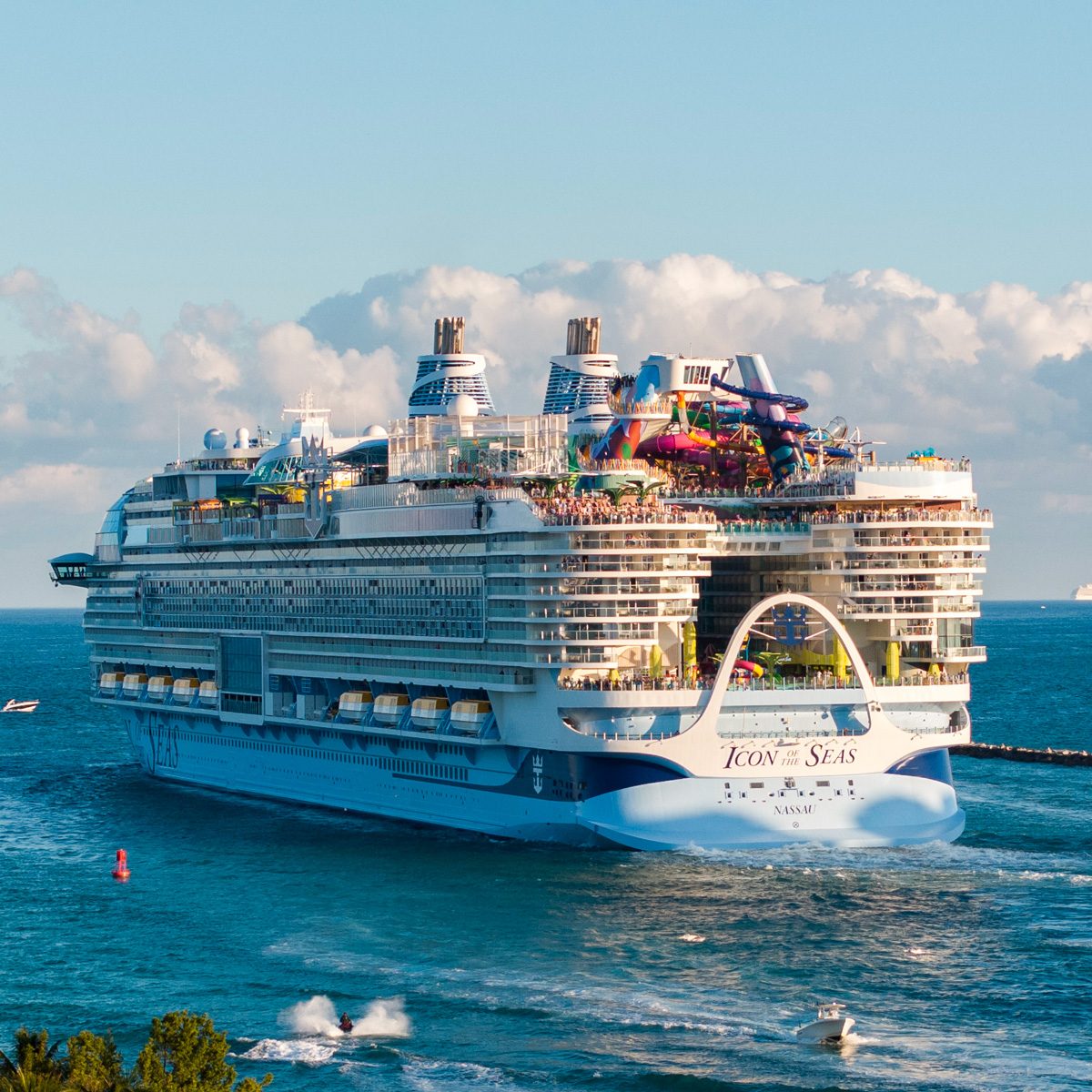One simple setting on your phone could cost you thousands of dollars at sea

Don’t Make This Expensive Mistake on Your Next Cruise

Even the most die-hard cruisers often complain that they feel nickeled and dimed on their trips. Want a cocktail? That’s extra. Love that pic the onboard photographer snapped of your family? Extra. Want to dine at the sushi bar? Extra (unless you’ve managed to score a free cruise upgrade). Want to use your cellphone just like you do on land? Also extra … but exactly how much extra depends on how technologically savvy you are and how well you follow instructions.
Recently, an unnamed Royal Caribbean cruise passenger learned this lesson the hard way after being hit with a $1,300 post-vacation cellphone bill. Surely you can imagine their complete shock, especially considering they had paid for the cruise line’s fixed-price Wi-Fi package—which costs about $16 per device per day (or $112 for a seven-day cruise).
So what happened? We have the details on what led to this astronomical bill—and how you can avoid a similar mistake on your next cruise.
Get Reader’s Digest’s Read Up newsletter for more travel, tech, cleaning, humor and fun facts all week long.
Where did this hefty charge come from?
The additional $1,188 came from an easy-to-make mistake in the passenger’s phone settings: failing to enable airplane mode. Yes, the one you’re supposed to set your phone to while flying so the signal doesn’t interfere with the plane’s onboard systems. If you don’t change this setting, your phone will constantly be looking for a cellphone tower as it attempts to download updates and refresh background data.
In order to effectively use a cruise line’s Wi-Fi, your phone must first be set to airplane mode. When activated, airplane mode suspends the device’s radio-frequency signal-transmission technologies, disabling all analog voice and digital data services. The end result? You won’t be hit with pricey roaming charges in the middle of the ocean—which is exactly what happened to this passenger when their child downloaded and watched videos all week. (FYI, Royal Caribbean refused to pay the cellphone bill.)
How can you save money on Wi-Fi and cell service on a cruise?

The first thing you should do when boarding a cruise is put your phone in airplane mode—and then keep it that way until the moment you disembark at the end of your voyage. While that’s the No. 1 thing to do, it’s a good idea to follow these money-saving cellphone tricks too.
Purchase a cruise-line Wi-Fi package
Most cruise lines offer tiered Wi-Fi plans for one or multiple devices. (Sometimes these tiers are also based on data speeds.) Purchasing a package in advance may be cheaper than buying while on board, so always look into that ahead of time.
Take advantage of free Wi-Fi at ports
Many ports of call have cafes, restaurants or public areas with free Wi-Fi you can use near the dock. However, you may have to make a small purchase (like a cup of coffee) in order to obtain the password.
Use offline apps and downloads
Download movies, music, books, maps and more before boarding the ship. Many apps—like Google Maps and Netflix—offer offline options, eliminating the need for constant internet access that will incur astronomical roaming fees.
Use messaging apps for communication
Instead of relying on expensive calls or texts, use apps like WhatsApp, iMessage or Facebook Messenger over Wi-Fi. They’re perfect for port days when you can access free Wi-Fi (versus taking your phone out of airplane mode and getting hit with international charges). But I also use them on board in conjunction with the cruise line’s Wi-Fi package; I always talk to my mom via Facebook Messenger, for instance, and iMessage my friends that way.
Buy an international phone plan
If you need cellular service on port days, check with your carrier about international plans or packages. They are typically much cheaper than using roaming services through the cruise’s cellular provider.
Why trust us
Reader’s Digest has published hundreds of travel stories that help readers explore the world safely, easily and affordably. We regularly cover topics such as the best places to visit (and the best times to visit them), tips and tricks to zoom through airport security, flight-attendant secrets, hotel-room hacks and more. We’re committed to producing high-quality content by writers with expertise and experience in their field in consultation with relevant, qualified experts. We rely on reputable primary sources, including government and professional organizations and academic institutions as well as our writers’ personal experiences where appropriate. For this piece, Jill Schildhouse tapped her experience as a longtime travel writer who has taken more than 25 cruises. We verify all facts and data, back them with credible sourcing and revisit them over time to ensure they remain accurate and up to date. Read more about our team, our contributors and our editorial policies.
Sources:
- YouTube: @JaysonJudson
- New York Post: “Stunned cruise passenger socked with $1.3K post-trip bill — don’t make the same mistake they did”























